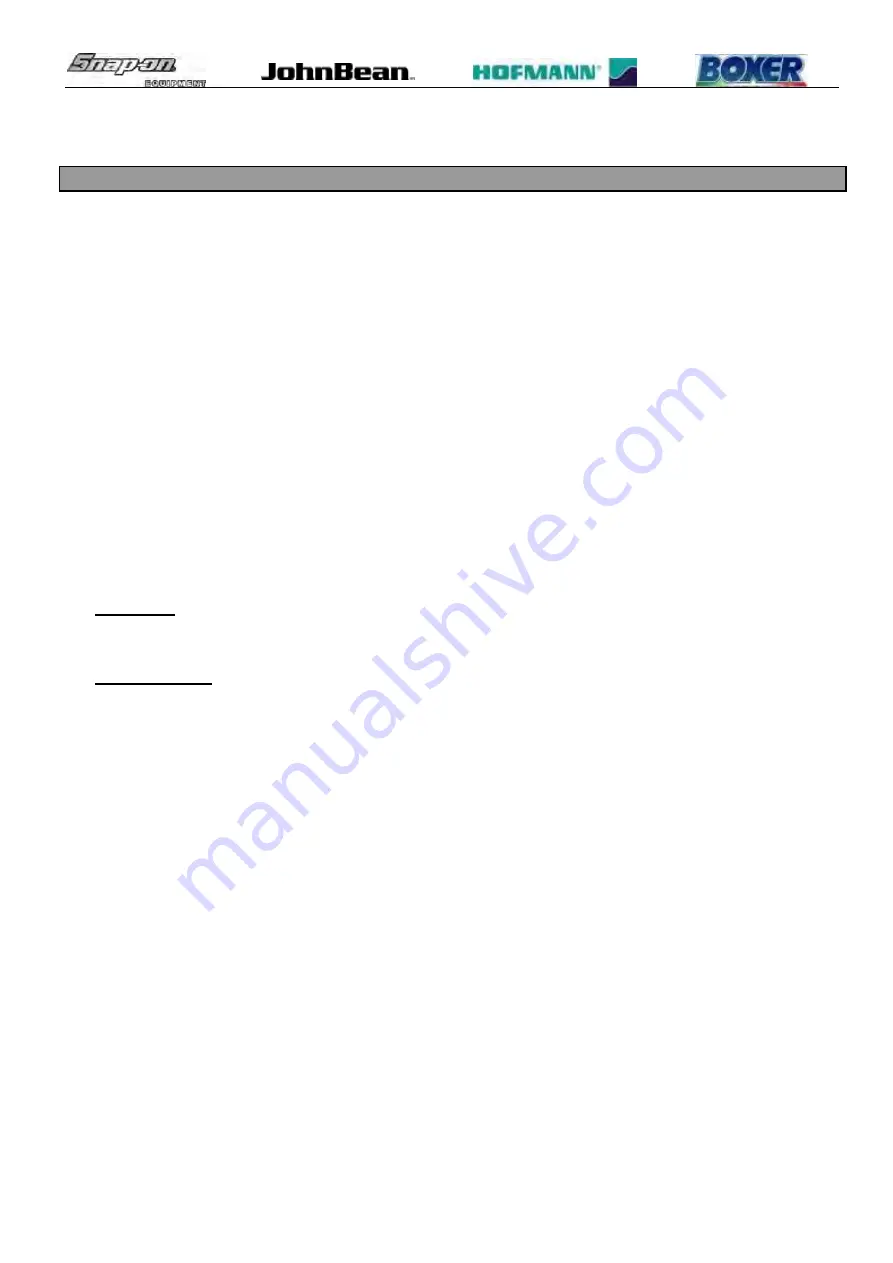
Passenger Tire Changers Service Manual 07-13 Rev.B
34
CHAPTER 6
PNEUMATIC SECTION
1 PNEUMATIC FUNCTION
The pneumatic section is related to all those functions and devices controlled by air pressure.
The working pressure required by machine to work properly must be from 8 to 12 bar and it is reported on the
sticker label.
6.0.1 AIR PRESSURE CIRCUIT:
The inlet air pressure is in the air filter - lubricator assy. This assembly is bolted to the back or to the side of of the
cabinet according to the models and it is equipped by a not adjustable air pressure regulator that reduces the over
pressure to 10 Bar to avoid overstress to pneumatic components.
6.0.2 FUNCTIONS DESCRIPTION:
The description of the pneumatic functions can be grouped into 5 phases as following:
Air filter - lubricator assy.
Inflation/bead seating function
Tools
cylinders
function.
Lift cylinder function.
6.0.3 AIR FILTER LUBRICATOR ASSY
The air pressure is controlled by the air pressure reducer and forwarded to water separator. Two output forward the
dry air to the inflator valve and to the bead seating tank.
One more outlet connect the water separator to the lubricator where an adjustable screw controls the oil drops to be
added to the dry air to be supplied to all pneumatic cylinders.
6.0.4 INFLATION / BEAD BLASTER FUNCTION
INFLATION:
The dry air pressure reach the inflation spool valve. Pressing the valve pedal for half of its stroke,
1
st
stage, the dry air will go to the tire through to the air control valve that controls the tire inflating pressure
during the inflating process. Releasing the pedal, the air contained in the tire will act the manometer showing
the tire pressure. Pressing the air releasing button the tire pressure will be reduced.
BEAD BLASTER:
The dry air pressure reach the air tank, equipped with a pressure relief valve set up at 12
bar. The bead blaster valve is basically a diaphragm valve and it is directly bolted to the tank. When inflator /
blaster pedal is in rest position, air pressure is maintained equal on both sides of the diaphragm.
Fully depressing the inflation pedal and the micro valve button simultaneously, air is allowed to exhaust through
the controlled valve lowering the pressure inside of the diaphragm.
Reduction of air pressure moves the diaphragm down allowing air from tank to flow to bead blaster jet.
6.0.5 DOUBLE ACTING CYLINDERS
OPENING:
The air flow arrives to the opened valve and reaches the side “A” of the cylinder.
Air contained in opposite side ”B” will escape through the coil valve.
CLOSING:
The air flow arrives to the opened valve and reaches the side “B” of the cylinder.
Air contained in opposite side ”A” will escape through the coil valve
6.0.6 SINGLE ACTING CYLINDERS
OPENING:
The air flow arrives to the opened valve and reaches the side “A” of the cylinder.
CLOSING:
The air flow from the valve to side “A” is interrupted. Air contained in side ”A” will escape through the
valve due to external springs loading.
































